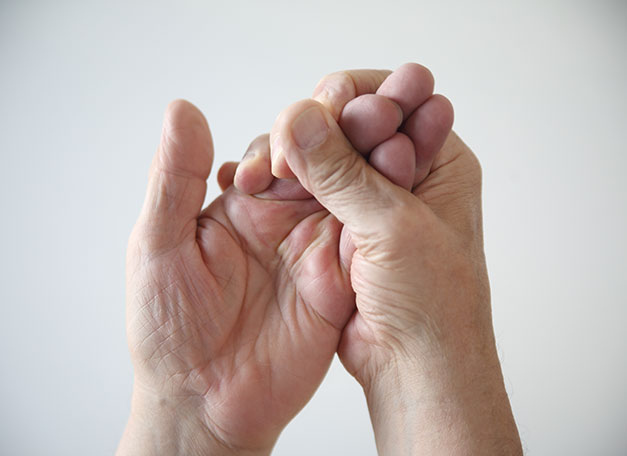
Have you noticed a pins and needles sensation in your hands and feet? Has it become more frequent? Are you experiencing sensations of numbness and tingling? This could be a symptom of menopause, and although it’s relatively uncommon, it can feel unsettling and unexpected. The tingling can affect any part of the body, although it most commonly affects the feet, legs, arms, and hands.
If you find yourself suffering from tingling extremities or are curious about the issue, we’ve gathered some information about the symptom and what you can do to ease the situation.
What are tingling extremities?
This menopause symptom (formally called paresthesia) is characterised by a feeling of numbness and pins and needles sensations in the arms, legs, hands, feet, fingers, and toes. Other than being unpleasant, fortunately most cases of tingling extremities during menopause and postmenopause do not indicate that anything more serious is going on.
Some women may lose their balance when walking due to the extremities numbness, and fingers can sometimes lose the ability to grip and do delicate movements efficiently. In other cases, a burning sensation can take over as nerves are pinched or joints compressed.
Symptoms of tingling extremities
- Pins and needles,
- Numbness or reduced feeling in certain areas,
- Burning sensation,
- Changes in sensation,
- Crawly sensation, or
- Increased sensitivity in certain areas.
If you experience paresthesia combined with any of the following symptoms, it may not be due to menopause, and it’s best you seek medical advice:
- Pain,
- Muscle spasm / inability to control limb movement,
- Weakness or paralysis,
- Vision changes,
- Back, head, or neck injury,
- Speech difficulties,
- Walking difficulties,
- Loss of sensation on one side of the body, or
- Loss of consciousness.
What causes paresthesia during menopause?
This form of paresthesia is caused by hormone fluctuation levels, especially the hormone oestrogen. Oestrogen is one of the main hormones to oscillate during menopause, and it has a great effect over the central nervous system. So when it is thrown off balance, it produces tingling sensation symptoms.
It is worth noting that while changing oestrogen levels are the primary cause of paresthesia, there are other medical conditions that can sometimes cause it. If you’re not experiencing menopause, seek the advice of a medical practitioner.
Cold hands and feet
Some women may additionally experience cold hands and feet due to hormonal imbalance. Oestrogen fluctuations can also affect healthy circulation throughout the body, causing body temperatures to drop, and resulting in cold extremities.
What can you do about it?
There are several things you can do to ease the symptoms of tingling. As with any sign of menopause, it is advisable to always explore the most natural and less invasive methods of treatment first.
A combination of lifestyle changes, such as a tweak in your diet, for example, can go a long way to prevent tingling episodes. Including fresh fruit, vegetables (especially avocado) with a healthy balance of proteins (especially fish) and carbohydrates in your diet will provide all the nutrients, minerals, and natural fatty acids you need.
Exercising regularly can also help with paresthesia. Physical activity promotes good circulation and tension-relief. To achieve the latter, yoga, stretching, and pilates are the best options.
Acupuncture and massages are also believed to help ease the symptoms of paresthesia. You can even try self-massages with aromatic oils. Massage oils or ointments that have capsaicin (the active component of chilli, which makes it hot) can sometimes help to add extra relief to the area while it’s being massaged.
Other easy things you can try to help control paresthesia include:
- Avoiding alcohol and caffeine
- Sleeping 8 hours per night
- Breathing exercises
- Drinking plenty of water
- Not smoking
- Physical therapy
If relief is not achieved by any of these methods, you can start thinking about medication or bringing your hormones back to balance with Hormone Replacement Therapy. It’s important that you find the right treatment method for you.
- De Azevedo Guimaraes, A.C. & Baptista, F. (2011). Influence of habitual physical activity on the symptoms of climacterium/menopause and the quality of life of middle-aged women. InternationalJournal of Women’s Health, 3, 319-328. doi: 10.2147/IJWH.S24822
- National Institutes of Health. (2015). Numbness and tingling. Retrieved May 20, 2016, from https://www.nlm.nih.gov/medlineplus/ency/article/003206.htm